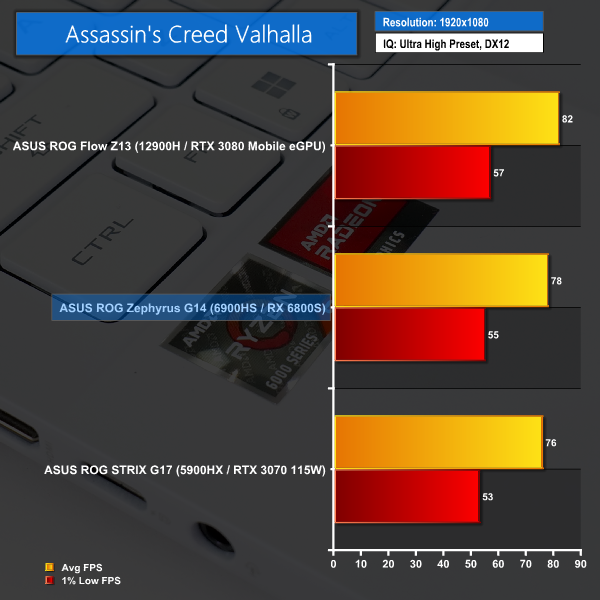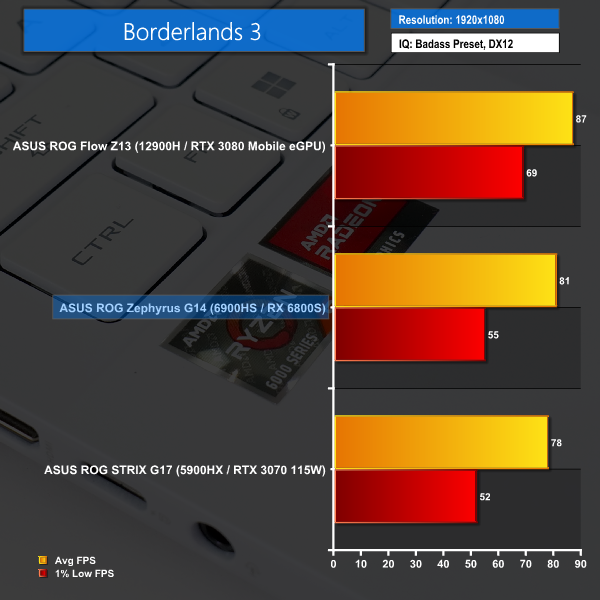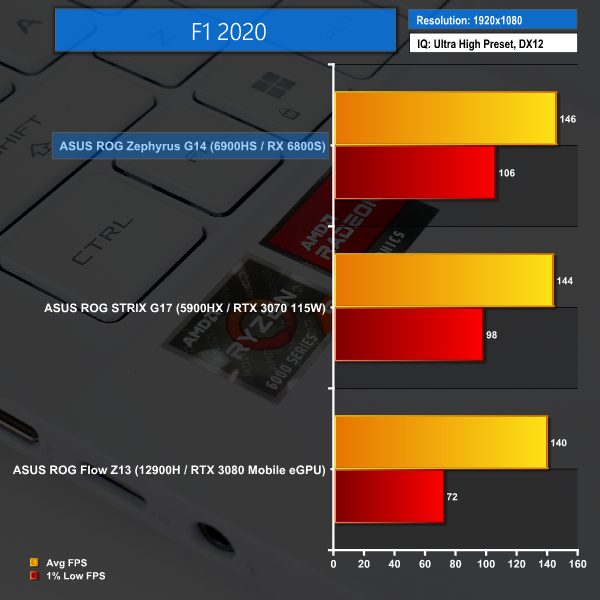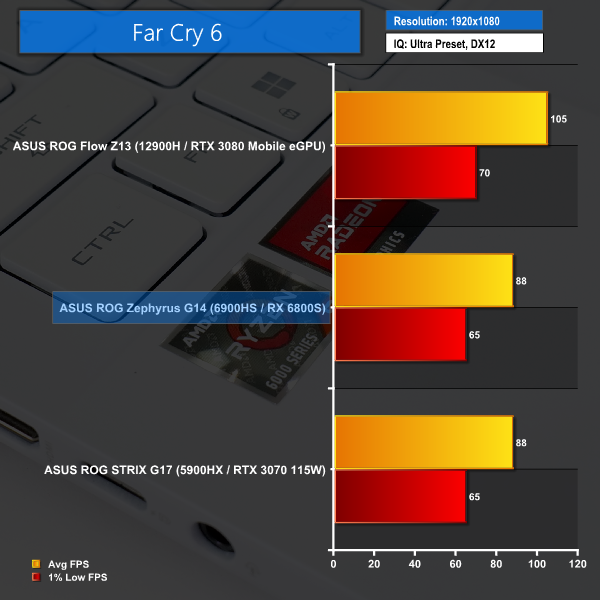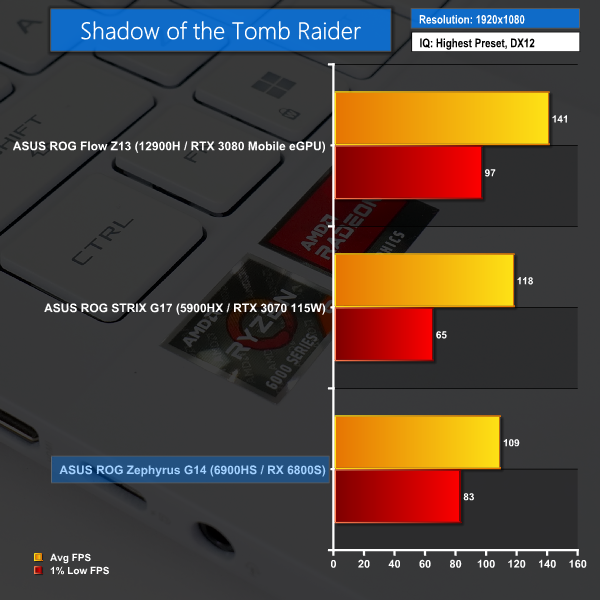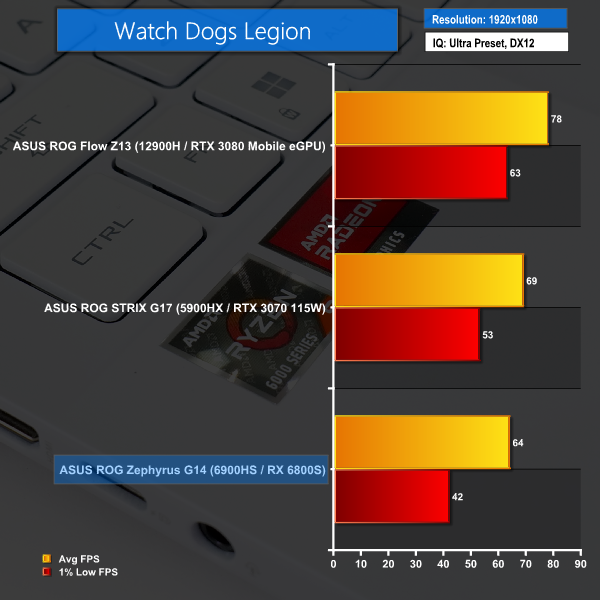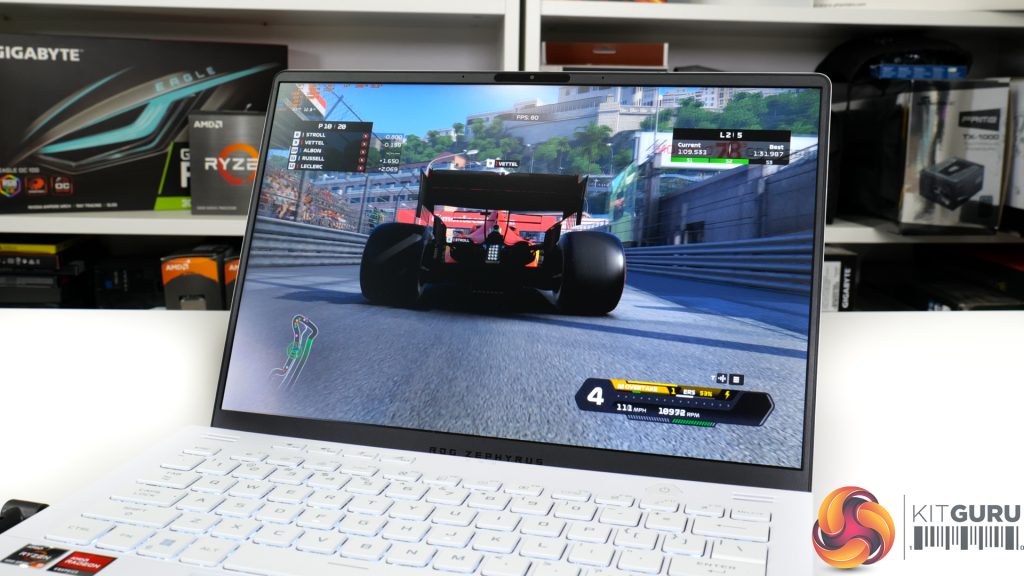It will not come as any surprise to see the Core i9-12900H-equipped ASUS Flow Z13 winning in most of these gaming scenarios. That is primarily thanks to the high-powered RTX 3080 Mobile eGPU solution used by that laptop for its gaming credentials. There are, however, instances where the stronger AMD Ryzen 9 6900HS CPU gets the G14 to outperform that Flow Z13.
What I am really interested in here, though, is the fight put up by the Zephyrus G14 versus the ROG STRIX G17. That 17-inch unit is physically much larger with better cooling and more power allocated to the CPU and GPU.
But the Ryzen 9 6900HS and RX 6800S inside the G14 do a superb job at maintaining truly competitive performance versus that big gaming beast. That’s even with the RTX 3070 Mobile chip allocated 115W of power versus the G14 RX 6800S solution using at least 15-or-so Watts less (and more often over 35W less).
Plus, if you want to crank up the ante and run the Zephyrus G14 at its native QHD+ resolution, there is the horsepower available to do that, as we show in the video review.
Just don’t expect the screen to operate anywhere near its 120Hz refresh rate in most modern titles at this resolution, unless you drop image quality, of course. That emphasises nicely the benefit of the Adaptive Sync display, though; at least you won’t have screen tearing if you do drop below a preferential frame rate occasionally.
 KitGuru KitGuru.net – Tech News | Hardware News | Hardware Reviews | IOS | Mobile | Gaming | Graphics Cards
KitGuru KitGuru.net – Tech News | Hardware News | Hardware Reviews | IOS | Mobile | Gaming | Graphics Cards


